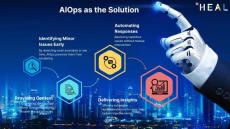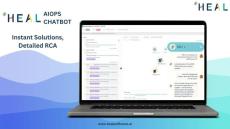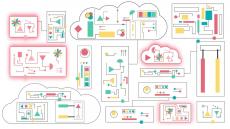- February 2025 (1)
- January 2025 (3)
- December 2024 (2)
- November 2024 (1)
- September 2024 (2)
- August 2024 (2)
- July 2024 (2)
- June 2024 (1)
- April 2024 (1)
- March 2024 (2)
- February 2024 (3)
- January 2024 (1)
- December 2023 (1)
- September 2023 (1)
- August 2023 (4)
- July 2023 (2)
- June 2023 (1)
- October 2022 (1)
- September 2022 (2)
- August 2022 (1)
- March 2022 (1)
- February 2022 (6)
- January 2022 (3)
- December 2021 (2)
- November 2021 (3)
- September 2021 (3)
- July 2021 (1)
- February 2020 (2)
HEAL Software Inc. is the innovator of the game-changing preventive healing software for enterprises known as HEAL, which fixes problems before they happen.
Preventive healing is a new category of monitoring and artificial intelligence for IT operations (AIOps) that preempts outages by acting before they occur and shifting from a break-and-fix model to predict-and-prevent.
HEAL Software Inc.’s preventive healing software supports IT operations by replacing multiple disparate manual IT operations tools with a single, intelligent and automated platform. It’s three-pronged approach focuses on prediction, diagnosis and prevention to eliminate alert fatigue, reduce repair and response times and eliminate over-deployment of resources – meaning IT can focus less on mitigating losses and more on becoming a profit center.
How it works:
- Predictive & Preventive: Detects early warning signals and prevents problems before they happen.
- Collective Knowledge: Learns complex relationships within the entire stack from endpoint to application and infrastructure.
- Situational Awareness: Collects contextual data to ensure responses are coherent and complete.
- Remedial & Autonomous: Finds root cause and rectifies independently.
Recognize and respond to smaller issues before they become outages.
















